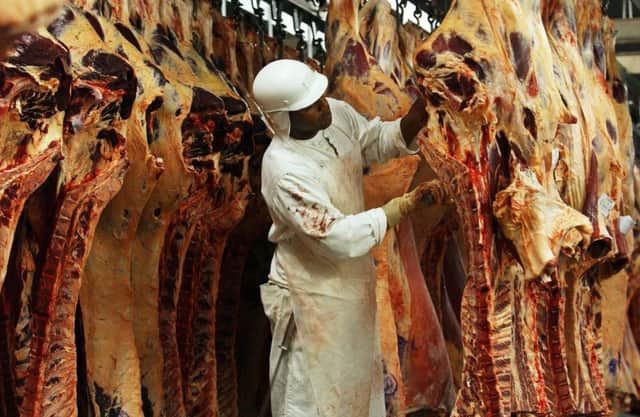Food industry assurances after first Scottish BSE case in a decade


Restrictions have been put in place at the farm in the Huntly area. Three other cattle and one calf on the site have been slaughtered as part of measures to control the situation.
A precautionary movement ban has been placed on the farm. No infected meat has entered the food chain.
Advertisement
Hide AdAdvertisement
Hide AdThe authorities have insisted there is no threat to humans from the isolated case of the brain-wasting disease Bovine Spongiform Encephalopathy (BSE). More than 170 people died between the major 1980s-90s outbreak and 2014 from the human form of the disease, Creutzfeldt-Jakob disease (vCJD) which was linked to eating contaminated meat.
It means that Scotland has lost its “negligible risk” status and has been downgraded to “controlled” – which is the current status in the rest of the UK.
The case was identified as part of the routine testing of all animals over four years of age that die on farms. The farmer involved is co-operating and is receiving support.
Scotland’s Chief Veterinary Officer Sheila Voas said: “While it is too early to tell where the disease came from in this case, its detection is proof that our surveillance system is doing its job.
“We are working closely with the Animal and Plant Health Agency to answer this question, and in the meantime, I would urge any farmer who has concerns to immediately seek veterinary advice.”
Fergus Ewing, Scotland’s Rural Economy Secretary, said he had activated a government response plan to protect Scotland’s farming industry.
He said: “While it is important to stress that this is standard procedure until we have a clear understanding of the disease’s origin, this is further proof that our surveillance system for detecting this type of disease is working.”
More than four million cattle were culled in the UK in the 1990s during the widespread BSE outbreak.
Advertisement
Hide AdAdvertisement
Hide AdStrict controls on what parts of animals were suitable for human consumption were introduced to protect consumers after the link between eating infected beef and developing vCJD was found in 1996.
Since then, there have only been a handful of BSE cases each year in the UK, with the last recorded case in Wales in 2015. Scotland’s last case of the disease was reported in 2009.
Ian McWatt, director of operations at Food Standards Scotland, said: “There are strict controls in place to protect consumers from the risk of BSE, including controls on animal feed, and removal of the parts of cattle most likely to carry BSE infectivity.
“Consumers can be reassured that these important protection measures remain in place and that Food Standards Scotland official veterinarians and meat hygiene inspectors working in all abattoirs in Scotland will continue to ensure that in respect of BSE controls, the safety of consumers remains a priority.”
Kate Rowell, chairwoman of Quality Meat Scotland, the body responsible for promoting the red meat sector, said: “Sporadic cases, such as the one confirmed this week, do occur and have also been reported in other countries.
“The Scottish red meat industry has built a global reputation for the quality of its beef and we developed this with Controlled Risk (CR) status until 2017 when that changed to Negligible Risk status.
“We do not anticipate that the return to CR status – the same status as exists in England and Wales – will have any serious impact on export market growth.”
NFU Scotland president Andrew McCornick said the case “demonstrates the efficacy of the surveillance measures in place”.
